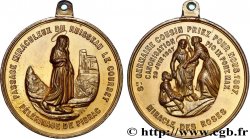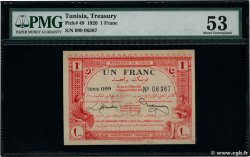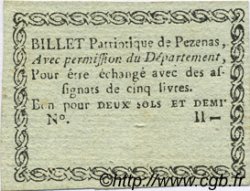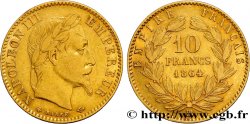v33_1703 - Faux de 20 francs or Napoléon III, tête laurée, désaxée 1863 Strasbourg F.532/7 var.
MONNAIES 33 (2007)
Начальная цена : 180.00 €
Назначить цену : 400.00 €
Цена реализации : 220.00 €
Количество ставок : 2
Максимальная предлагаемая цена : 420.00 €
Начальная цена : 180.00 €
Назначить цену : 400.00 €
Цена реализации : 220.00 €
Количество ставок : 2
Максимальная предлагаемая цена : 420.00 €
Тип Faux de 20 francs or Napoléon III, tête laurée, désaxée
Дата: 1863
Монетный двор / Город: Strasbourg
Количество отчеканенных монет: ---
Металл: gold
Проба: 900 ‰
Диаметр: 21,24 mm
Ориентация осей монеты: 5 h.
Вес: 6,35 g.
Век: en relief ***** DIEU* PROTEGE* LA* FRANCE
Редкость: R2
Комментарии о состоянии
Minime apparence d’usure tenant plutôt à la fabrication qu’à la circulation
Ссылки в каталоге: :
Лицевая сторона
Аверс: легенда: NAPOLEON III - EMPEREUR.
Аверс: описание: Tête laurée de Napoléon III à droite ; signé BARRE au-dessous.
Обратная сторона
Реверс: легенда: EMPIRE - FRANÇAIS// 20 - FR// BB 1863.
Реверс: Описание: Écu orné d'un aigle posé sur un foudre, entouré du collier de la Légion d'Honneur, posé sur un manteau brochant un sceptre et une main de justice.
Комментарий
L’analyse de l’usure est intéressante car les listels sont francs et aigus, la tranche superbe est vive alors que les plats sont assez mous. La monnaie n’a pas circulé mais a été fabriquée à partir de moulages puis marquée sur la tranche par un moyen mécanique. Il est probable que le faussaire ait cherché à réaliser la plus belle tranche possible, peut-être pour faire des échange dans des rouleaux.
On note un poids assez exact et un or apparemment au titre, ce qui permet de dater cette pièce de la crise du bi-métallisme, au tournant du siècle. On reste perplexe sur la négligence d’avoir fabriqué la pièce en axe à 5 heures : un faussaire ne devrait-il pas avoir à cœur de ne pas attirer l’attention ? Autre erreur mais moins visible, le différent du droit est l’abeille de Paris et non la croix de Strasbourg.
Ce faux est du même atelier que le faux de 1896 de cette vente car ces deux pièces, aux axes erratiques, sont de tranche identique.
The analysis of the wear is interesting because the rims are clean and sharp, the superb edge is lively while the flats are quite soft. The coin did not circulate but was made from casts then marked on the edge by mechanical means. It is likely that the forger sought to make the most beautiful edge possible, perhaps to make exchanges in rolls. We note a fairly accurate weight and an apparently gold fineness, which allows us to date this coin from the bi-metallism crisis, at the turn of the century. We remain perplexed by the negligence of having manufactured the coin with an axis at 5 o'clock: should not a forger be careful not to attract attention? Another error but less visible, the different from the obverse is the Paris bee and not the Strasbourg cross. This fake is from the same mint as the 1896 fake in this sale because these two coins, with erratic axes, have identical edges
On note un poids assez exact et un or apparemment au titre, ce qui permet de dater cette pièce de la crise du bi-métallisme, au tournant du siècle. On reste perplexe sur la négligence d’avoir fabriqué la pièce en axe à 5 heures : un faussaire ne devrait-il pas avoir à cœur de ne pas attirer l’attention ? Autre erreur mais moins visible, le différent du droit est l’abeille de Paris et non la croix de Strasbourg.
Ce faux est du même atelier que le faux de 1896 de cette vente car ces deux pièces, aux axes erratiques, sont de tranche identique.
The analysis of the wear is interesting because the rims are clean and sharp, the superb edge is lively while the flats are quite soft. The coin did not circulate but was made from casts then marked on the edge by mechanical means. It is likely that the forger sought to make the most beautiful edge possible, perhaps to make exchanges in rolls. We note a fairly accurate weight and an apparently gold fineness, which allows us to date this coin from the bi-metallism crisis, at the turn of the century. We remain perplexed by the negligence of having manufactured the coin with an axis at 5 o'clock: should not a forger be careful not to attract attention? Another error but less visible, the different from the obverse is the Paris bee and not the Strasbourg cross. This fake is from the same mint as the 1896 fake in this sale because these two coins, with erratic axes, have identical edges








 Cообщить об ошибке
Cообщить об ошибке Распечатать страницу
Распечатать страницу Отправить мой выбор
Отправить мой выбор Задать вопрос
Задать вопрос Consign / sell
Consign / sell
 Информация
Информация













